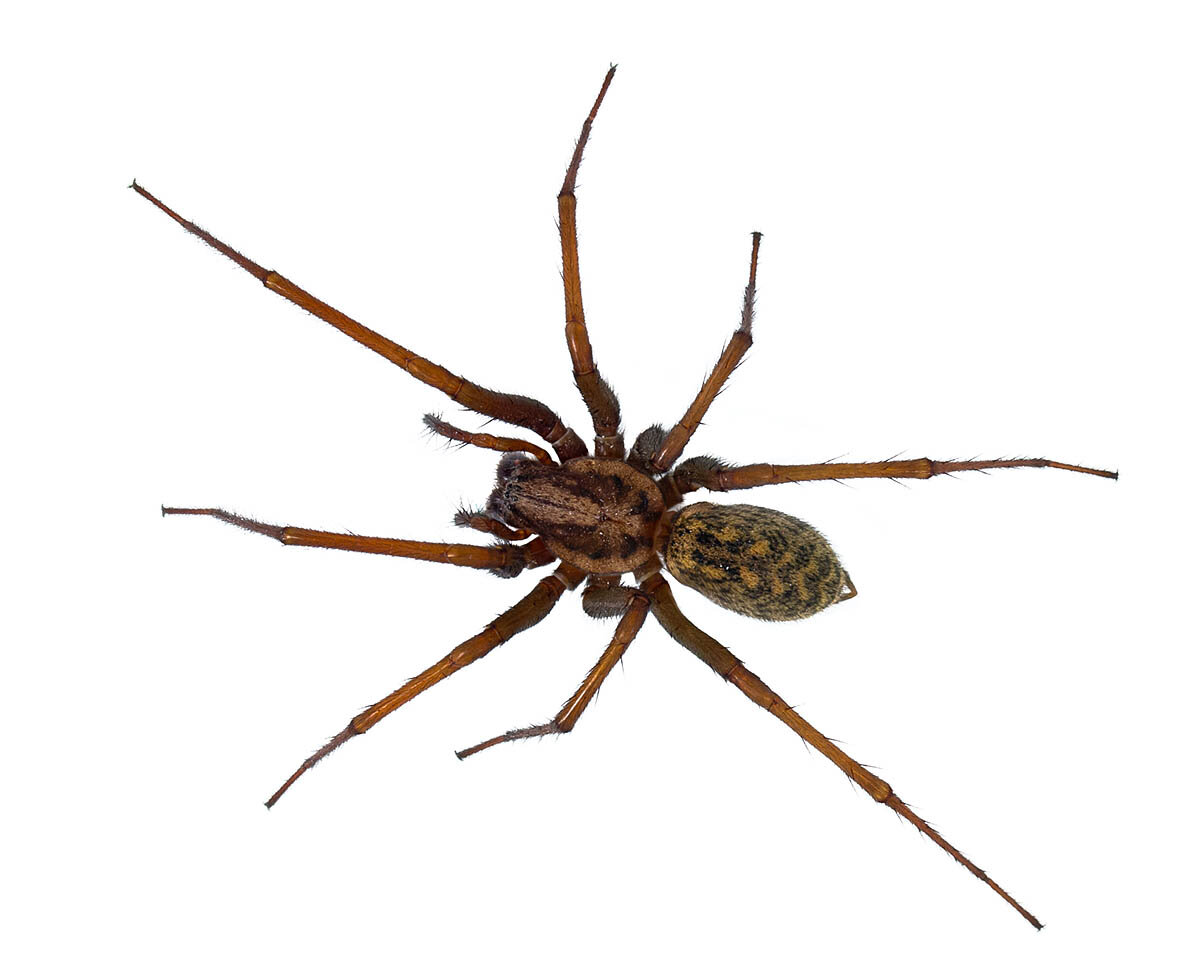Arachnophobes Beware!
Arachnophobes Beware!
by
Rob Read
I love this time of the year as autumn begins to really show its intention, warning of the cold and dark days ahead as we trip inexorably on towards the turn of the year. Chill, dew-soaked mornings have me reaching for my winter coat as I take the dog out for her morning walk, and the sun’s lowering angle illuminates the changing colour of the trees beautifully as I head up the hill to the woods. Under its colourful canopy, fungi are popping out all over the place, literally overnight, and the birdsong is returning after its summer silence, although with far less gusto than spring.
Above: A common sight for most of us in our homes, the Giant House Spider. ©Rudmer Zwerver/Shutterstock
Autumn always has me thinking about spiders. Those chill, damp mornings epitomising autumn bejewel the numerous delicate webs of the orb weavers as I walk around the fields and woodlands close to home. I always marvel at their beauty and the engineers behind their construction. And of course, this is the time of year when the various species of house spider become more active, particularly after dark when we commonly see them emerging from their hiding places and scuttling across the floor or adorning our walls.
I must admit to having a bit of a love/hate relationship with them. I certainly respect them for what they are and the advantages of sharing my living space with them, but I do find their general demeanour and the way they move so swiftly all rather creepy. Fear of these house guests is all rather illogical of course, but I understand why many people regard them with such horror. To generate a bit more love and respect for these creatures, I thought I would do a bit of research and share a few spidery facts. I was surprised by some of the things I learned.
There are several species of spider that we may encounter in our homes, but I thought it best to reach for the biggest gun and take a look at the Giant House Spider Eratigena atrica. This is a common species found in homes and outbuildings across the UK and Northern Europe and it can grow up to 16mm in body length, with a leg span of up to 75mm. There is no difference in the colouration and markings of both the males and females, the conspicuously hairy bodies and long, slender legs are typically earthy brown in colour, although the females are slightly larger than the males.
The Giant House Spider is a sprinter and can cover up to half a metre per second – perhaps one of the attributes that most freaks people out! They are most active in the autumn when the males are out and about looking for females – I had always assumed that the spiders I encountered were all females seeking refuge inside as the temperature outside drops, amazing how wrong you can be! Once the male finds a female, it will typically stay with her for weeks, mating numerous times. Of course, they eventually die and are consumed by the female in time-honoured arachnid tradition. In contrast to the short-lived male, the female can live for several years, and both sexes are capable of surviving for months without eating or drinking. They have been known to bite humans on occasion, but only when really provoked.
The next time you see a house spider racing across the living room floor as you snuggle up on the sofa in front of the tv this autumn, perhaps reflect on what an amazing animal it is and how long it may have been a house guest.
Next week I’ll take a look at another of the largest spiders we have in the UK, but one that lives in an entirely different habitat, the Fen Raft Spider.
Rob Read. October 2021.


